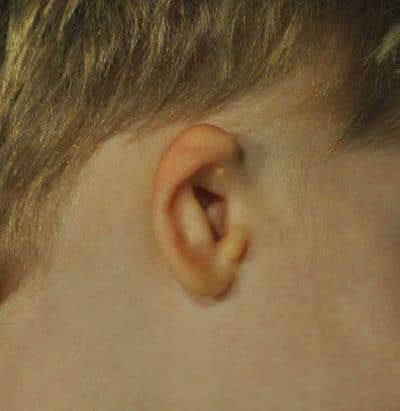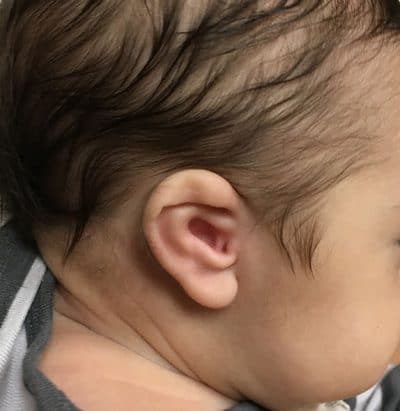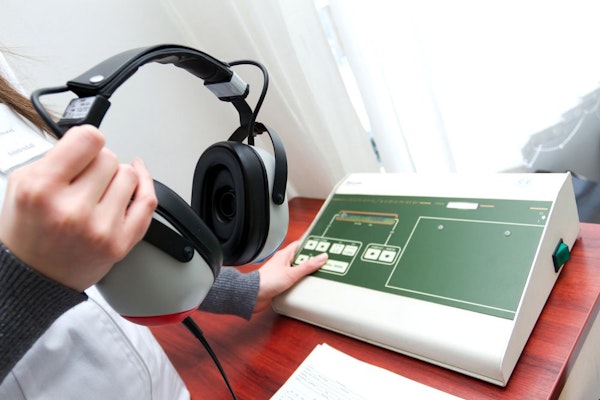
Microtia
Does your child have microtia, a condition in which their outer ear did not develop properly during pregnancy?
The Congenital Ear Institute offers surgical and nonsurgical options to improve your child's hearing and the appearance of their ear.
Our San Antonio, TX, practice treats microtia patients from all over the world. We can help your child, too.
What Is Microtia?
/
Microtia is a congenital deformity in which the outer ear does not fully develop during the first trimester of pregnancy. As a result, the external ear is small and misshapen.
Microtia and Aural Atresia

Microtia most often occurs alongside aural atresia, the absence of an ear canal.
Microtia and aural atresia can be unilateral (affecting one ear) or bilateral (affecting both ears). Of the thousands of microtia patients Dr. Arturo Bonilla has evaluated at his San Antonio practice, approximately 10% were bilateral.
Microtia most often occurs in one ear, in males, and on the right side. It may also be part of other medical conditions such as hemifacial microsomia, Goldenhar syndrome, and Treacher-Collins syndrome.
What Causes Microtia?
Though doctors don't know the exact cause of microtia, they often attribute it to a decreased blood supply to the developing ear in-utero. Others have theorized certain medications taken by the mother during pregnancy or environmental factors may be the cause of the deformity.
As a parent, you may have feelings of guilt if your child has microtia, but it is not your fault. You can, however, correct the condition with the help of Dr. Bonilla in San Antonio. He is a plastic surgeon who deals exclusively with pediatric ear deformities and concentrates on rebuilding the external ear.
Repair Your Child's Ear
and Restore Their Hearing
Request a Consultation Today

Dr. Bonilla from the Congenital Ear Institute in Texas is the only exclusive pediatric microtia surgeon in the world. He has been in practice since 1996 and has thousands of success stories. He performs ear reconstructions and places bone-anchored hearing aids to improve the appearance and functionality of children's ears. If your child has microtia, we can help.
Our San Antonio, TX, office is proud to offer our services to patients all around the world. We invite you to request a consultation with our surgeon today.
(210) 477-3277
Why Families Choose Dr. Bonilla In San Antonio
"We are so blessed that we found him. He not only is an amazing surgeon but he is also an amazing human being. He has a huge heart. He is an artist. He is the best Microtia Specialist!" Heather M.
Special Considerations For Children With Bilateral Microtia
Children born with bilateral microtia are managed differently than those with unilateral microtia. Children with unilateral microtia have one normal ear that allows them to hear. Children with bilateral microtia don’t have that luxury. Their hearing loss requires amplification with a bone-conduction hearing aid.
There are usually three specialists involved in obtaining a bone-conduction hearing aid. The primary care doctor usually refers the child to an ear, nose, and throat specialist. A hearing test is performed by an audiologist who typically dispenses and tests the hearing aid.
Understanding Bilateral Microtia
If you want to understand the kind of hearing loss a child with bilateral microtia and atresia experiences, it is simple to reproduce. Simply place a finger in each ear to block the ear canal. That is similar to their experience.
Bone conduction is the solution for this hearing loss. Because the vast majority of children with microtia have normal inner ears (where the hearing nerve is located), sound travels through the skull via vibrations. A sound will strike the skull, nose, jaw, etc., and vibrations are transmitted straight to the inner ears, totally bypassing the ear canals.
Your Treatment Options
The external ear does not always require medical treatment, but your options include:
- Surgery with natural cartilage
- Surgery with polyethylene implant
- Ear prosthetic
- 3D printed ear (pending FDA study)

Though unilateral atresia may not require intervention, your treatment options for hearing loss include:
- Bone-conduction hearing aid via Softband
- Bone-conduction implanted hearing aid
- Atresiaplasty or canalplasty (surgical opening of the ear canal)
Dr. Bonilla's Technique
Dr. Bonilla only performs microtia surgery using natural cartilage from the rib. This method offers several advantages over the plastic polyethylene alternative, such as:
- Less anesthesia
- Natural look, feel, and bend
- Shorter surgery times
This technique is the most accepted microtia treatment worldwide and it can even be used to reconstruct ears in anotia patients. It is a life-changing treatment that can increase your child's confidence and provide them with a sense of normalcy throughout their life.
Change Your Child's Life
Contact Us Today

A rib cartilage reconstruction performed by a qualified surgeon like Dr. Bonilla provides stunning results that can last a lifetime. Dr. Bonilla has dedicated his entire career to treating children born with microtia and atresia, and has been recognized as the leading pediatric microtia surgeon using the rib cartilage technique.
If you are considering whether your child could benefit from rib cartilage reconstruction, we invite you to request a consultation with Dr. Bonilla or call our San Antonio office:
(210) 477-3277
"Dr. Bonilla only performs microtia surgery using natural cartilage from the rib. This is a life-changing technique that can increase your child's confidence and provide them with a sense of normalcy throughout their life."
Rib Cartilage Reconstruction Timeline
The process of rib cartilage reconstruction can give your child a new ear in as little as four months. The treatment involves a minimum of two surgeries in San Antonio and several steps:
"Our own rib cartilage has a much longer life than plastic polyethylene implants and it makes for a better final reconstruction."
Though treatment can be completed in just two surgeries, your child may require more, especially if they have bilateral microtia. Dr. Bonilla will never rush treatment and will make sure your child's best interests steer the process for the best possible results.
Natural Cartilage vs. Plastic Polyethylene Implants
Why Was the Microtia Missed During My Ultrasound?
You may be wondering why this condition was not detected during the ultrasound. Ultrasounds are used for:
- Estimating delivery date
- Detecting ectopic pregnancies
- Detecting heart rate
- Confirming the normal anatomy of vital structures such as the heart, brain, lungs, and kidneys
The ultrasound detects many important functions, but the ears are not the top priority.

Patients from Around the World Come to Texas for Our Pediatric Plastic Surgeon
"Thank you for doing my ear surgeries. My new ear looks so great!" Charlotte














